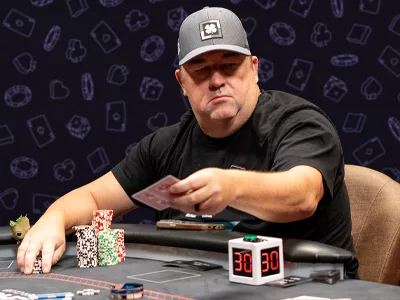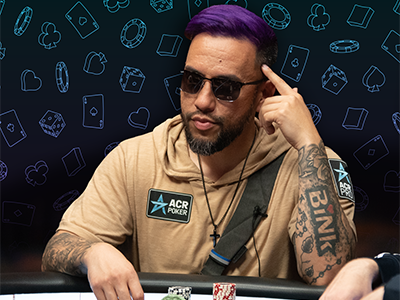Knowing when and how to muck can protect strategy and prevent costly mistakes at the table Mucking is a crucial part of Texas Hold’em, yet it is often misunderstood. Many players believe myths about mucking that can lead to costly mistakes at the table. Understanding the truth behind these misconceptions can help improve decision-making and
Category: Beginner
Basic Principles of Mucking in Texas Hold’em for New Players
While mucking is a simple action, mastering when to do it is an essential skill Mucking is a fundamental part of Texas Hold’em that every player should understand. It refers to discarding a hand without revealing it, either voluntarily or when forced to fold. While it may seem straightforward, knowing when and how to muck
What It Means to Muck in Texas Hold’em
Knowing when to muck can impact how opponents perceive your strategy In Texas Hold’em, the term “muck” refers to both the act of folding a hand and the pile of discarded cards during a game. Mucking typically occurs in two key situations: when a player folds their hand during a betting round or when they
Starting Hand Considerations in 7-Card Stud: Door Cards and Live Cards
Unlike Texas Hold’em, where all players share community cards, 7-Card Stud is a game of individual board awareness and keen observation. The key to success in this format starts with proper hand selection—specifically evaluating door cards (your first upcard) and live cards (cards that haven’t been folded or revealed in other players’ hands). While post-flop
Setting Limits and Choosing the Right Stakes in Texas Hold’em
When it comes to winning at Texas Hold’em, the top players understand that establishing limits and choosing appropriate stakes are essential. If you’re grinding cash games or jumping into a tournament, you’re not successful because you’re familiar with the game—you’re successful because you’re making smart decisions with your bankroll and playing at stakes where you
The Role of Pot Control With Small Pocket Pairs in Texas Hold’em
By focusing on pot control, you can extract value when conditions are favorable Managing the size of the pot with small pocket pairs in Texas Hold’em is a crucial strategy that can help players maximize value while minimizing risk. Since these hands—such as pocket twos through pocket sixes—are often vulnerable post-flop, understanding when to control
The importance of position in Hold’em
Poker is a game of information, and nothing influences that more in No-Limit Texas Hold’em than position. Grinding cash games or battling deep in a tourney, where you’re physically close to the dealer button can be the difference between controlling action or having to speculate where you are. Understanding the strength of position and playing
What To Raise and Fold Preflop in Short Deck Hold’em
Since equities run closer in Short Deck, choosing the right hands to raise and fold will keep you ahead of the competition Short Deck Hold’em, also known as Six-Plus Hold’em, is a variation of traditional Texas Hold’em that uses a smaller deck by removing the twos, threes, fours, and fives. This change alters hand rankings
Strategies for Playing Out of Position With Small Pocket Pairs in Texas Hold’em
The key to success is knowing when to set mine, apply pressure, or let go of the hand Playing out of position with small pocket pairs in Texas Hold’em presents challenges, but the right strategies can help turn these hands into profitable opportunities. Small pocket pairs, typically ranging from 22 to 66, have strong set-mining
The Importance of Position in Short Deck Hold’em
Mastering positional awareness is key to long-term success in Short Deck Hold’em Position plays a crucial role in Short Deck Hold’em, shaping the way players make decisions throughout a hand. Unlike traditional Texas Hold’em, Short Deck is played with a reduced deck, as all cards below a six are removed. This changes hand strengths, odds,
What To Do With Small Pocket Pairs in Texas Hold’em
Understanding when to fold, call, or raise with small pocket pairs is essential to maximizing value Playing small pocket pairs in Texas Hold’em can be tricky, as these hands have potential but often require the right conditions to be profitable. Pairs like 2-2 through 6-6 are not strong on their own, but they can turn
Common Mistakes to Avoid as a Short Deck Beginner
Avoiding common mistakes and adapting to Short Deck’s dynamics can help you improve your game Short Deck Hold’em, also known as Six Plus Hold’em, is an exciting variation of traditional Texas Hold’em that uses a 36-card deck, removing all twos, threes, fours, and fives. While the game shares many similarities with its full-deck counterpart, it












